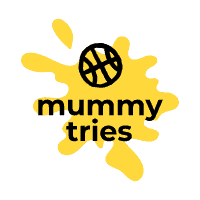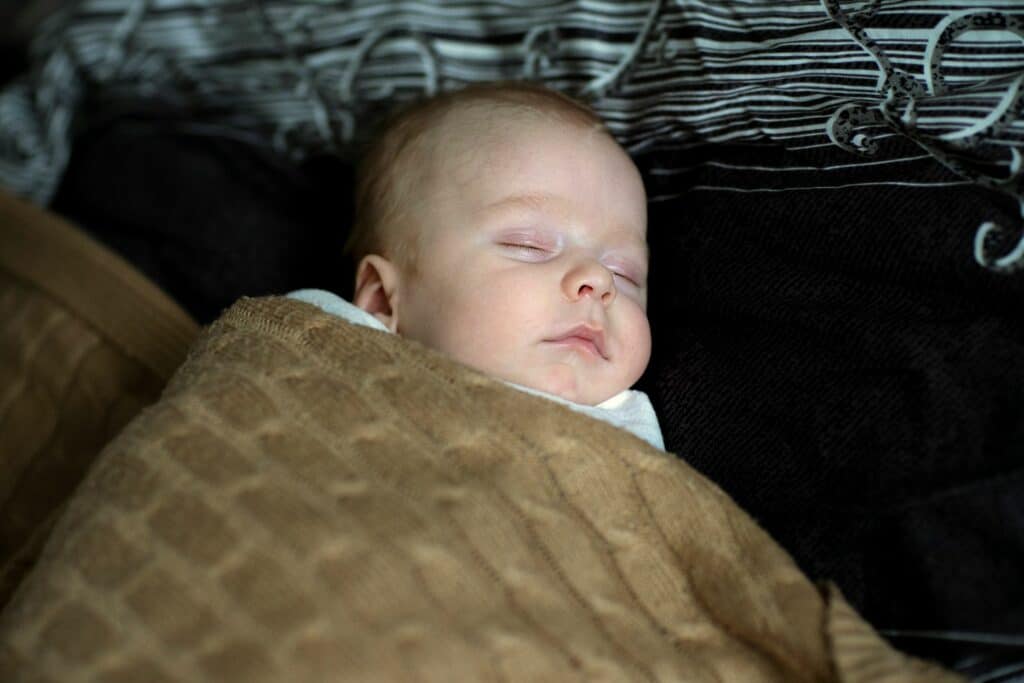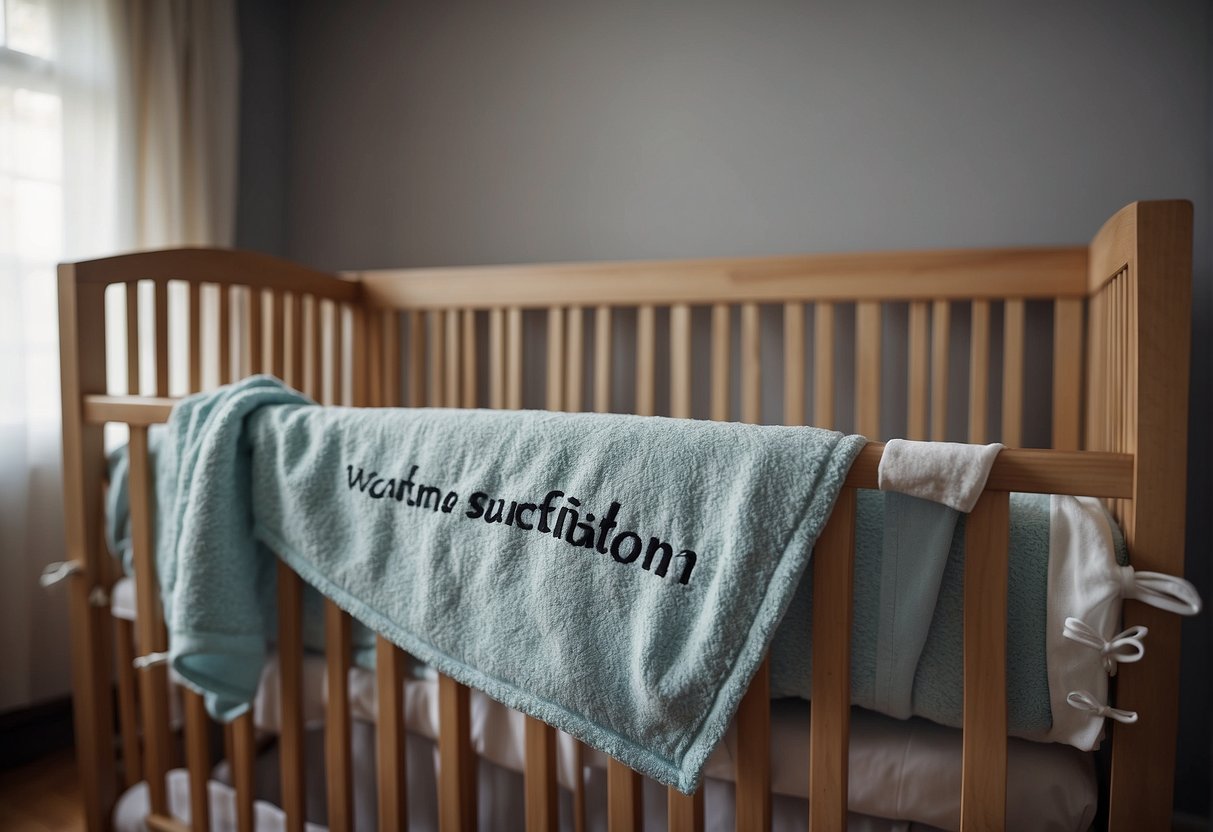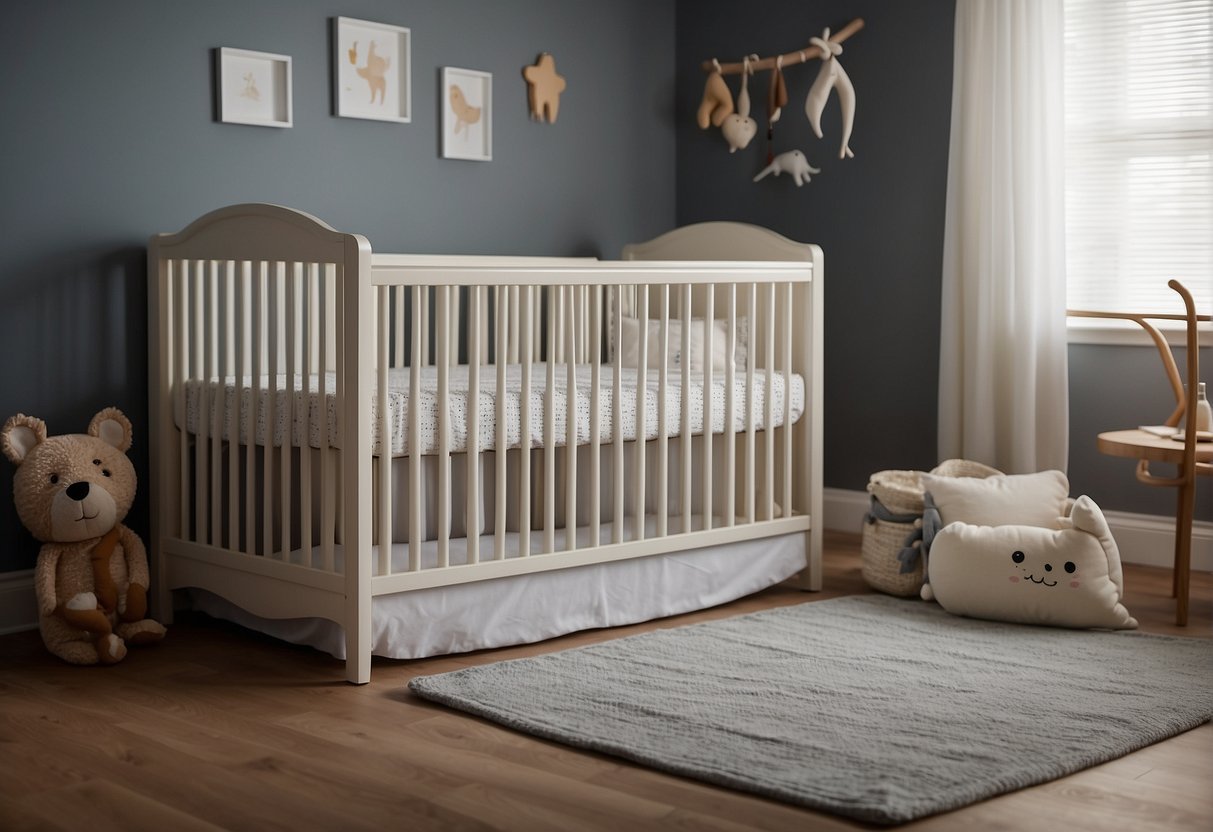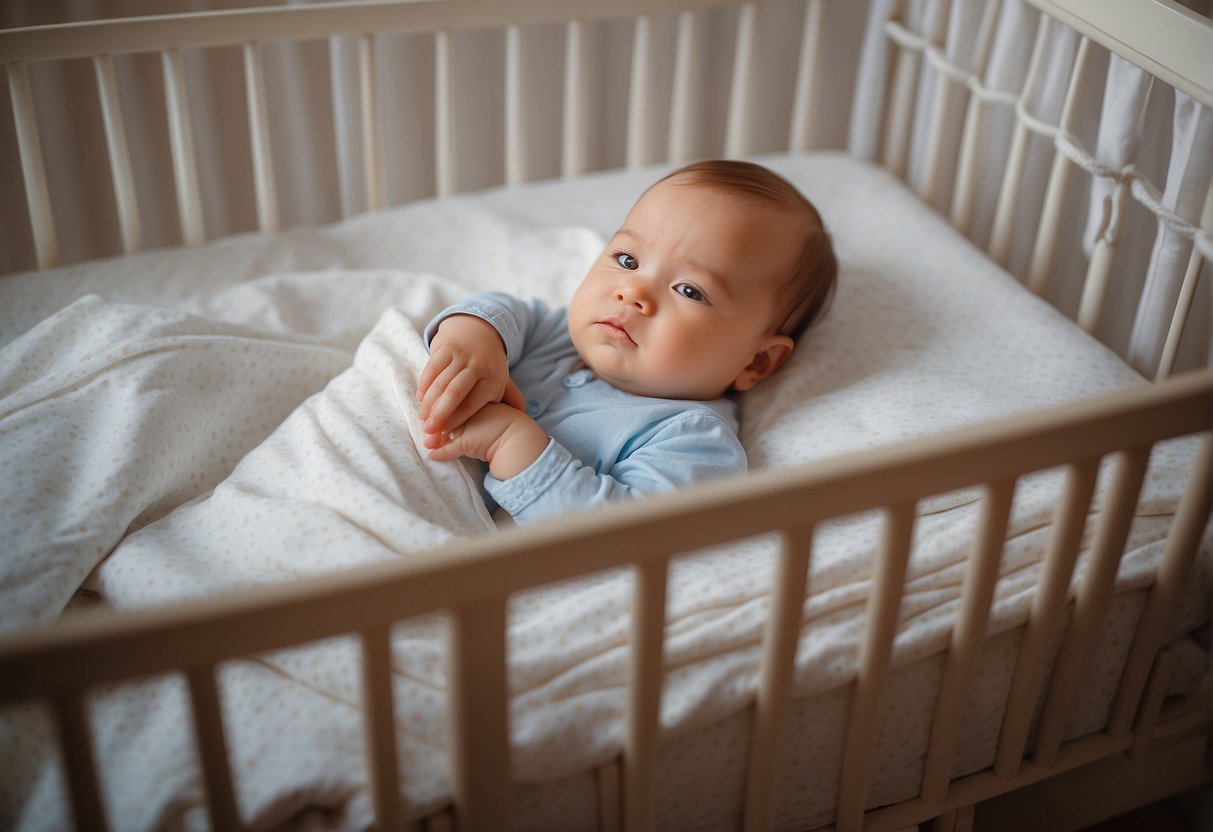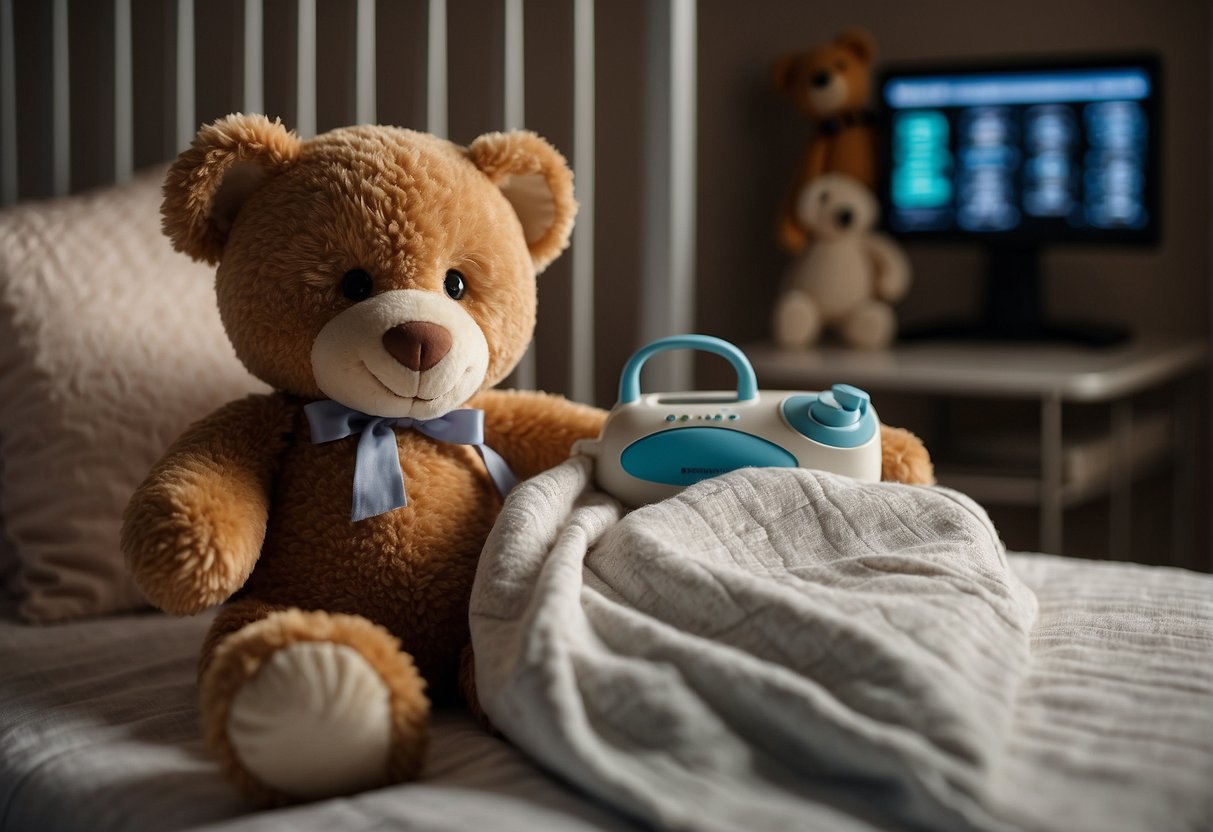Toddler suffocation is a serious concern for parents, especially when it comes to blankets. While blankets are a common way to keep children warm and cozy while they sleep, they can also pose a suffocation risk. Parents often wonder if they should use blankets for their toddlers and if so, when it is safe to do so.
Understanding the risks of suffocation is crucial for parents when it comes to creating a safe sleeping space for their toddlers. According to the American Academy of Pediatrics (AAP), soft bedding, including blankets, can increase the risk of suffocation and Sudden Infant Death Syndrome (SIDS). Therefore, it is recommended that parents avoid using blankets for infants and young babies.
Creating a safe sleeping space for toddlers involves more than just avoiding soft bedding. Parents should also ensure that their child’s sleeping environment is free of any loose objects or potential hazards. Additionally, parents should monitor their child’s sleeping habits and be prepared for emergencies. By taking these precautions, parents can help reduce the risk of suffocation and ensure their child’s safety while they sleep.
Key Takeaways
- Soft bedding, including blankets, can increase the risk of suffocation and Sudden Infant Death Syndrome (SIDS).
- Creating a safe sleeping space for toddlers involves more than just avoiding soft bedding.
- Parents should monitor their child’s sleeping habits and be prepared for emergencies.
Understanding the Risks of Suffocation
Suffocation is a serious risk for infants and young children, especially during sleep. According to the American Academy of Pediatrics (AAP), suffocation is a leading cause of injury-related deaths among children under the age of one. Understanding the suffocation hazards in the sleep environment and the role of blankets in safe sleep guidelines is crucial for preventing suffocation risks.
Suffocation Hazards in the Sleep Environment
Suffocation hazards in the sleep environment include soft bedding materials such as pillows, blankets, and stuffed animals. These items can pose serious dangers to babies, especially those under one year old. Infants are at a higher risk of suffocation because they cannot move themselves out of dangerous positions or clear their airways if they become obstructed.
Other suffocation hazards in the sleep environment include sleeping on a soft surface such as a waterbed or couch, sleeping with an adult or sibling, and sleeping in a position that blocks the airway. It is important to ensure that the sleep environment is safe and free of any suffocation hazards.
The Role of Blankets and Safe Sleep Guidelines
Blankets are a common suffocation hazard in the sleep environment. According to the AAP, soft bedding materials increase the risk of suffocation and Sudden Infant Death Syndrome (SIDS). The AAP recommends that infants be placed on their backs to sleep on a firm and flat surface, free of soft bedding materials.
To reduce the risk of suffocation, parents and caregivers should follow safe sleep practices recommended by the AAP. These practices include placing infants on their backs to sleep, using a firm and flat sleep surface, keeping soft objects and loose bedding out of the sleep environment, and avoiding overheating.
In conclusion, understanding the risks of suffocation in the sleep environment and the role of blankets in safe sleep guidelines is crucial for preventing suffocation risks. Parents and caregivers should follow safe sleep practices recommended by the AAP to reduce the risk of suffocation and ensure a safe sleep environment for infants and young children.
Creating a Safe Sleeping Space for Toddlers
When it comes to creating a safe sleeping space for toddlers, there are a few key things to keep in mind. By following some simple guidelines, parents can help ensure that their child is sleeping safely and soundly.
Choosing the Right Bedding and Blankets
One of the most important things to consider when creating a safe sleeping space for toddlers is the bedding and blankets. It’s important to choose lightweight, breathable materials that won’t overheat the child. Additionally, it’s important to avoid using any blankets or bedding that could potentially suffocate the child, such as heavy comforters or pillows.
According to the American Academy of Pediatrics, toddlers should not have any loose bedding or soft objects in their sleeping space until they are at least one year old. After one year, parents can consider introducing a lightweight blanket or other bedding, but it’s important to choose items that are specifically designed for toddler use.
Optimizing the Sleep Area for Safety
In addition to choosing the right bedding and blankets, parents should also take steps to optimize the sleep area for safety. This includes ensuring that the toddler bed or crib is placed in a safe location away from any potential hazards, such as cords or blinds.
It’s also important to ensure that the mattress is firm and fits snugly in the bed frame, as this can help prevent suffocation and other accidents. Finally, parents may also want to consider using bed rails to prevent the child from falling out of bed during the night.
By following these simple guidelines, parents can create a safe sleeping space for their toddler that promotes healthy sleep and reduces the risk of accidents and suffocation.
Preventing Overheating and Ensuring Comfort
When it comes to keeping your toddler safe and comfortable while sleeping, it’s important to consider the type of blanket you use. The right blanket can help prevent overheating and ensure your child gets a good night’s sleep. Here are some tips to help you choose the appropriate blanket thickness and material and maintain ideal room temperature.
Appropriate Blanket Thickness and Material
It’s important to choose a blanket that is appropriate for your child’s age and size. For infants, it’s best to avoid using blankets altogether to reduce the risk of suffocation. Once your child is a toddler, you can start using a lightweight blanket that is thin and breathable. A natural duvet filling can be a good choice for a toddler blanket, as it is lightweight and breathable.
When it comes to material, natural fibers like cotton or bamboo are ideal for toddler blankets. These materials are soft, breathable, and hypoallergenic, which can help prevent skin irritation and allergies. Avoid using heavy blankets or those made from synthetic materials, which can trap heat and cause your child to overheat.
Maintaining Ideal Room Temperature
In addition to choosing the right blanket, it’s important to maintain a comfortable room temperature to prevent overheating. The ideal room temperature for a toddler’s bedroom is between 68 and 72 degrees Fahrenheit. Use a room thermometer to monitor the temperature and adjust the thermostat or open windows as needed.
To help regulate your child’s body temperature while sleeping, dress your toddler in comfortable, breathable clothing made from natural fibers. Avoid dressing your child in too many layers or thick clothing, which can cause overheating.
By following these tips, you can help prevent your toddler from overheating while sleeping and ensure they stay comfortable throughout the night.
Age-Appropriate Bedding Choices
When it comes to a toddler’s bedding, safety is of utmost importance. One of the biggest concerns for parents is whether a toddler can suffocate under a blanket. While it is possible for a toddler to suffocate under a blanket, there are age-appropriate bedding choices that can help minimize the risk.
When to Introduce a Blanket to a Toddler
According to Sleepation, it is generally safe to introduce a blanket to a toddler as early as 18 months old. However, it is important to keep in mind that every child is different, and some may not be ready for a blanket until they are closer to two years old. It is always a good idea to consult with your pediatrician to determine when it is safe to introduce a blanket to your toddler.
When introducing a blanket to a toddler, it is important to choose a lightweight blanket that is not too bulky or heavy. A heavy blanket can increase the risk of suffocation and overheating. It is also important to ensure that the blanket is the right size for your toddler’s bed. A blanket that is too big can easily become tangled around your toddler, increasing the risk of suffocation.
Safe Alternatives to Traditional Blankets
For parents who are concerned about the risk of suffocation associated with traditional blankets, there are safer alternatives available. One popular option is a wearable blanket, also known as a sleep sack or a sleep bag. A wearable blanket is designed to keep your toddler warm while also reducing the risk of suffocation and overheating.
Another safe alternative to traditional blankets is a lightweight, breathable blanket made from natural fibers such as cotton. These blankets are designed to keep your toddler warm without overheating, and they are less likely to become tangled around your toddler during the night.
In conclusion, when it comes to a toddler’s bedding, safety should always be the top priority. By choosing age-appropriate bedding choices and following safe sleep practices, parents can help ensure that their toddler sleeps safely and soundly through the night.
Monitoring and Emergency Preparedness
Using Baby Monitors Effectively
Baby monitors are an essential tool for parents to keep an eye on their children, especially when they are sleeping. When using baby monitors, it is important to place them in the right position to get a clear view of the baby. The monitor should be placed at a safe distance from the baby’s crib, and the camera should be angled to get a clear view of the baby’s face and chest.
Parents should also ensure that the monitor is working properly and that the batteries are fully charged. It is also important to test the monitor regularly to make sure that it is functioning correctly.
What to Do in Case of Suffocation
Despite taking all the necessary precautions, there is still a risk that a toddler may suffocate under a blanket. In such cases, it is important to act quickly and seek emergency medical attention.
Parents should be familiar with the signs of suffocation, which include difficulty breathing, blue skin, and loss of consciousness. If a parent notices any of these signs, they should immediately remove the blanket and call for emergency medical services.
In the event of an emergency, parents should also be prepared with basic first aid skills. They should know how to perform CPR and the Heimlich maneuver to help their child until emergency medical services arrive.
In conclusion, while it is important to take all necessary precautions to prevent suffocation, accidents can still happen. By using baby monitors effectively and being prepared for emergencies, parents can take steps to keep their children safe.
Frequently Asked Questions
At what age is it safe for a toddler to sleep with a blanket?
According to Parentswonder, children 12 months and older are no longer considered at risk for suffocation from blankets or sudden infant death syndrome (SIDS). However, it is still recommended to use a lightweight, breathable blanket for toddlers.
What are the suffocation risks associated with toddlers sleeping with blankets?
As per StaySafe.org, soft bedding materials such as blankets, pillows, and stuffed animals can be a significant risk to infants during sleep. These materials can cause suffocation and carbon dioxide buildup, leading to a lack of oxygen. Heavy bedding, numerous stuffed animals, bumper pads, or beds too close to the wall can also risk suffocation or entrapment.
How can I ensure my toddler is safe while sleeping with a blanket?
To ensure your toddler’s safety while sleeping with a blanket, you can follow these guidelines from ParentalQueries:
- Use a lightweight, breathable blanket that is not too thick.
- Don’t layer too many blankets on top of your toddler.
- Keep the blanket away from your toddler’s face and neck.
- Make sure your toddler’s head remains uncovered.
- Avoid using pillows or stuffed animals in the crib.
Why do some toddlers cover their heads with blankets, and is it safe?
Toddlers might cover their heads with blankets because it provides them with a sense of security and comfort. However, it is not safe for toddlers to cover their heads with blankets as it increases the risk of suffocation. As per SlumberHabit, covering the head with a blanket can cause a lack of oxygen and carbon dioxide buildup, leading to suffocation.
What should parents know about toddlers walking around with blankets over their heads?
Parents should know that toddlers should not walk around with blankets over their heads. It increases the risk of suffocation and can cause accidents such as tripping and falling. Parents should supervise their toddlers while they are using blankets and ensure they are not covering their heads.
Are there any signs that indicate a toddler is struggling to breathe under a blanket?
According to ParentalQuestions, some signs that indicate a toddler is struggling to breathe under a blanket include:
- Restlessness and fussiness
- Rapid breathing or gasping for air
- Sweating
- Blue or pale skin
- Unresponsiveness
If a parent observes any of these signs, they should remove the blanket immediately and seek medical attention.

My name is Laura, and as a mother of two, I understand firsthand the joys and challenges of raising a child. That’s why I created this website, to provide a comprehensive and trustworthy source of information and support for new and expectant parents.
